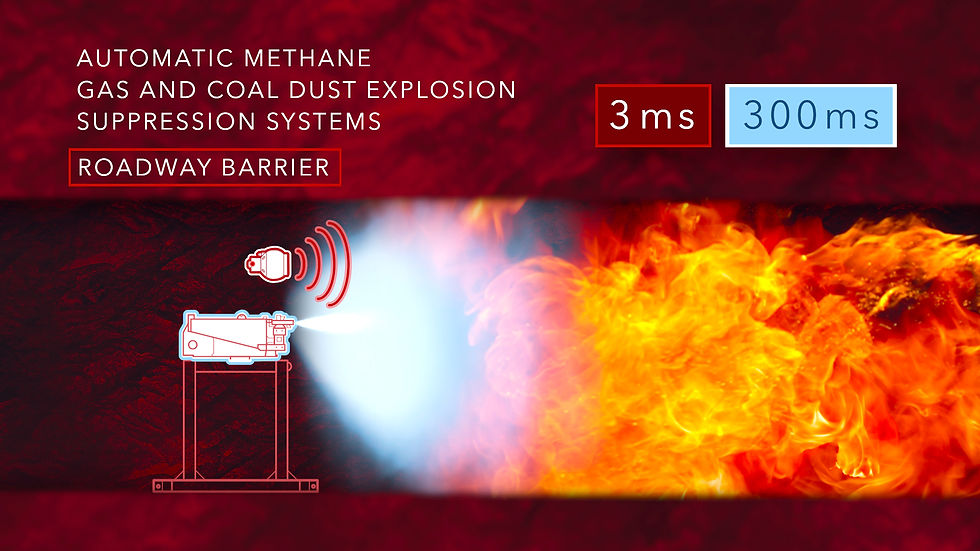Last Resort When An Explosion Occurs In An Underground Mine
- Explospot
- Jan 18, 2021
- 1 min read
Updated: Mar 21, 2021
Solutions providing a last resort in case of explosions in underground mines. See pages 8-12 of the Mine Ventilation Society of South Africa journal for Q4 2020. Automatic explosion suppression systems, also known as "Active Explosion Barriers" have been used in multiple mines.
Most mines in South Africa are striving to reach a state of “Zero Harm”. For underground coal mines this means they have to resolve (amongst other issues) the risk of methane gas or coal dust explosions.
First and foremost, it is crucial to prevent such an explosion from happening. Although prevention caused these events to be ever more unlikely, the current situation in underground operations still indicate that it seems impossible to reach a state whereby the risk of a methane gas or coal dust explosion can be eliminated. In case all prevention fails, it is still possible to react upon a developing explosion by containing and suppressing it. In South Africa alone, active explosion suppression systems (AESS) have proven their effectiveness by suppressing at least six methane gas explosions in the last 18 years. Originally designed to suppress an explosion at the cutter-head of a continuous miner, the technology has evolved to be applicable to a multitude of hard-to-handle, high-risk scenarios. This paper touches on current explosion-related risk areas and how active explosion suppression systems have been designed to contain and suppress an explosion in these areas. Thereby introducing a “last resort” mechanism in an approach to reach Zero Harm in underground coal mining operations in South Africa.
Read the full journal here:
For more details contact us on:







Comments